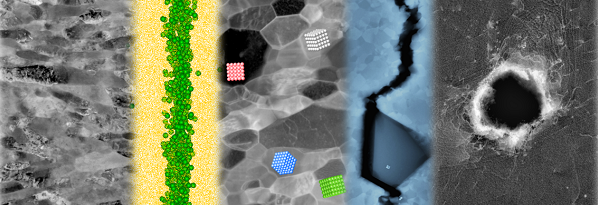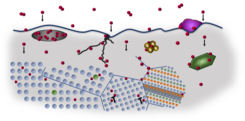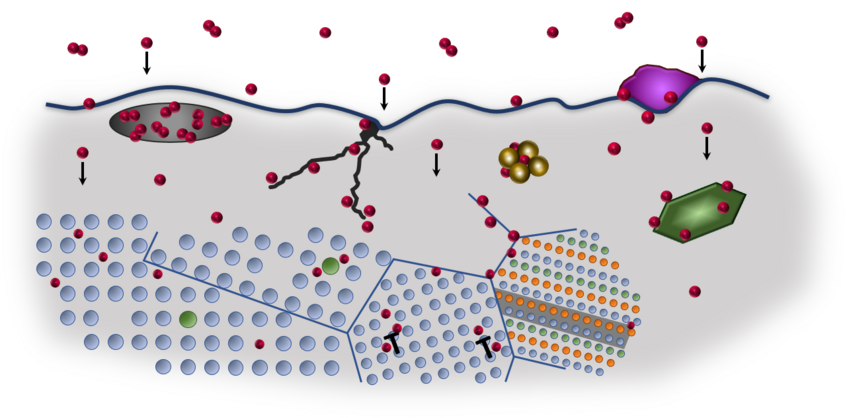
Hydrogen Mechanics and Interfaces
Hydrogen is ubiquitous in nature. Understanding hydrogen-microstructure interactions in metallic alloys and composites is a key issue in the development of low-carbon-emission energy by e.g. fuel cells, or the prevention of detrimental phenomena such as hydrogen embrittlement. Our research on hydrogen is directed to resolve the underlying deformation and failure mechanisms in materials in the presence of hydrogen, through small-scale mechanics and high-resolution characterization. A particular focus of our research is directed to the study of interfaces, as they define substantially the materials behavior.
Failure mechanisms due to hydrogen initiate at the atomic scale with hydrogen absorption and further interaction with trap binding sites or defects. Therefore, we develop and apply novel instrumentation for small-scale characterization, and couple our findings with near-atomic resolution characterization techniques to qualify and quantify hydrogen location and content in specific features of the microstructure. Even more, in-situ testing while charging the sample with hydrogen prevents the formation of concentration gradients due to hydrogen desorption.
Of especial interest in our studies are interfaces. Interfaces in materials largely determine their bulk behavior, and they are also prone to structural and mechanical changes due to chemical segregation or phase formation. We characterize interfaces through high-resolution techniques such as atom probe tomography, electron microscopy and nanoindentation based methods. Understanding and engineering interfaces is essential to develop high-performance materials, that in addition could endure environmental failure.

